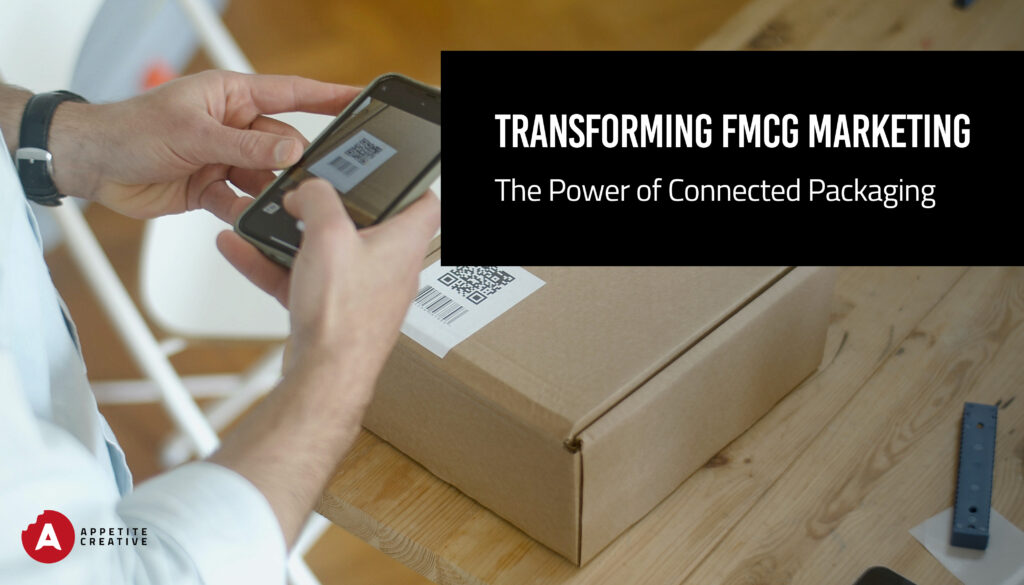
What are Fast-Moving Consumer Goods (FMCG) companies currently seeking? They are actively seeking innovative ways to engage with their customers. One of the most transformative trends in this space is connected packaging. At Appetite Creative, we have seen firsthand that connected packaging reshapes FMCG marketing and creates more meaningful connections between brands and consumers.
Enhancing Consumer Engagement
One of the most significant benefits of connected packaging is its ability to enhance consumer engagement. Traditional packaging often serves a singular purpose: to protect and promote the product. However, connected packaging transforms this static role into an interactive experience.
For example, by scanning a QR code on a product’s packaging, consumers can access a wealth of digital content. This might include detailed product information, usage tips, or immersive AR experiences. This only enriches the consumer experience and fosters a stronger connection to the brand. Imagine a cereal box that, when scanned, provides fun games or educational content for kids, creating a daily touchpoint whose presence is not limited to the breakfast table.
Data Insights
Connected packaging also provides new avenues for data collection. By tracking interactions with the packaging, brands can gain valuable insights into consumer behavior. This data can reveal patterns in how, when, and where products are used, helping companies to refine their marketing strategies and product offerings.
For instance, if data shows that many consumers are scanning a product in a particular region, a brand might decide to launch targeted marketing campaigns in that specific area. Additionally, this data can inform future product development, ensuring that new products align closely with consumer preferences and needs.
Building Trust and Transparency
In an age where consumers are increasingly concerned about the origins and quality of their products, connected packaging can play a crucial role in building trust and transparency. By integrating traceability features, brands can provide consumers with detailed information about the product’s journey from farm to table.
This transparency not only satisfies consumer curiosity but also builds trust. When consumers can verify the authenticity and quality of a product through a simple scan, they are more likely to develop a loyal relationship with the brand.
Sustainable Marketing
Sustainability is another area where connected packaging can make a significant impact. By providing digital content, brands can reduce the need for excessive printed materials. For example, instead of including a printed manual in every product, a brand can direct consumers to an online version via a QR code. This reduces waste and ensures that consumers always have access to the most recent, up-to-date information.
The Future of FMCG Marketing
As we look to the future, it’s clear that connected packaging will continue to play a pivotal role in FMCG marketing. The innovation potential is vast, from integrating new technologies like blockchain for even greater transparency to creating hyper-personalized consumer experiences.
At Appetite Creative, we are excited to be at the forefront of this new wave of change. We believe connected packaging is more than just a trend; it’s a powerful tool that can transform how brands connect with their consumers, build trust, and drive growth in the competitive FMCG market.
In conclusion, connected packaging’s integration in FMCG marketing is increasing consumer engagement, and paving the way for smarter, data-driven decisions, increased transparency, and sustainability. Brands that embrace this technology will undoubtedly be well-positioned to lead in the ever-evolving marketplace.
